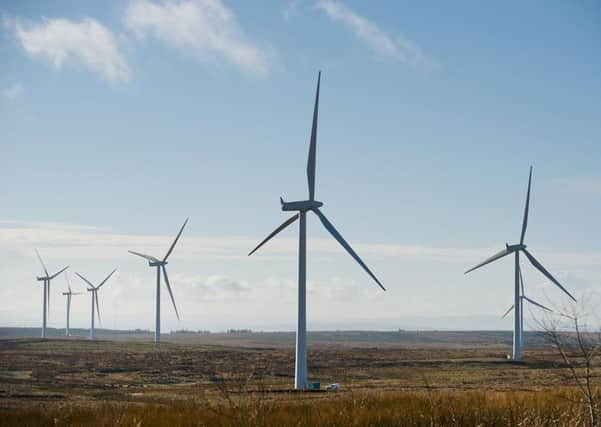Gary McGovern: Support needed to help wind farms flourish
This article contains affiliate links. We may earn a small commission on items purchased through this article, but that does not affect our editorial judgement.


Onshore wind is seen as “essential” to this strategy and so a new onshore wind policy statement to sit alongside the Energy Strategy is being developed in parallel. However, a clock is ticking that could see many onshore wind farms come offline long before 2050.
Advertisement
Hide AdAdvertisement
Hide AdWith the typical lifespan of a wind farm ranging from 20 to 25 years, the earliest schemes of the 1990s will soon reach their natural end-of-life and operators need to decide if those wind farms can be “repowered” or will be decommissioned. These decisions must be taken many years in advance, meaning potentially thousands of megawatts of wind power capacity could be decommissioned over the period 2025 to 2035 unless a programme of repowering takes place.
At the same time, the new financial paradigm faced by onshore wind with no current route to market means costs for the next generation of turbines must be reduced. There is reason for optimism in this regard as technology has moved on at pace since wind turbines first appeared on our skyline making it possible that reconfiguration of a site – fewer but larger, more productive turbines – can drive more efficient generation, in turn bringing down the cost of energy, ultimately benefiting the consumer.
However, there is a conundrum facing local planning authorities in the impending replacement-versus-removal argument, which dates back to initial planning applications.
Then, in part to address concerns as to landscape and visual impact, planning was (unlike most other development) typically granted on a time-limited basis with an assumption of “reversibility”. It became assumed that, when projects reached end-of-life, they would be taken down.
Against this backdrop, Scottish Natural Heritage (SNH) has been charged with developing guidance for repowering applications.
Current indications are that SNH advice is likely to be that any application to repower a wind farm should be treated as if the permission was being granted for a virgin site (a higher test than one might expect). The fact that wind farm infrastructure has been in situ would be largely ignored or just one among many factors.
But assessing applications against a theoretical, future greenfield baseline is likely to lead to an unduly negative view being taken of the consequences of extending the life of a wind farm.
Advertisement
Hide AdAdvertisement
Hide AdTreating applications to repower existing wind farms in no way differently to the original application goes against the grain of what the Scottish Government is trying to achieve with its onshore wind policy and its pledge to streamline the planning process.
First Minister Nicola Sturgeon remains committed to promoting the increased use of renewable energy sources and has ambitious targets: renewable sources are to generate 50 per cent of Scotland’s total energy consumption by 2030. At the same time, the Scottish Government has been promoting planning reforms so that in future the planning process is more efficient and effective
As we move to the new so-called “subsidy-free” world for onshore wind, it is doubly important that decision-makers, locally and nationally, recognise that anything that makes the planning process lengthier, more expensive and less certain is a further obstacle for their renewable energy targets.
It is accepted that not all wind farms are well located and in some cases decommissioning will be the most appropriate option. However, the current approach seems calibrated to preclude a few “bad eggs” rather than deliver a “foot up” to the many well-sited schemes where repowering should be actively and strongly encouraged.
• Gary McGovern, partner and environmental law and planning specialist at legal firm Pinsent Masons